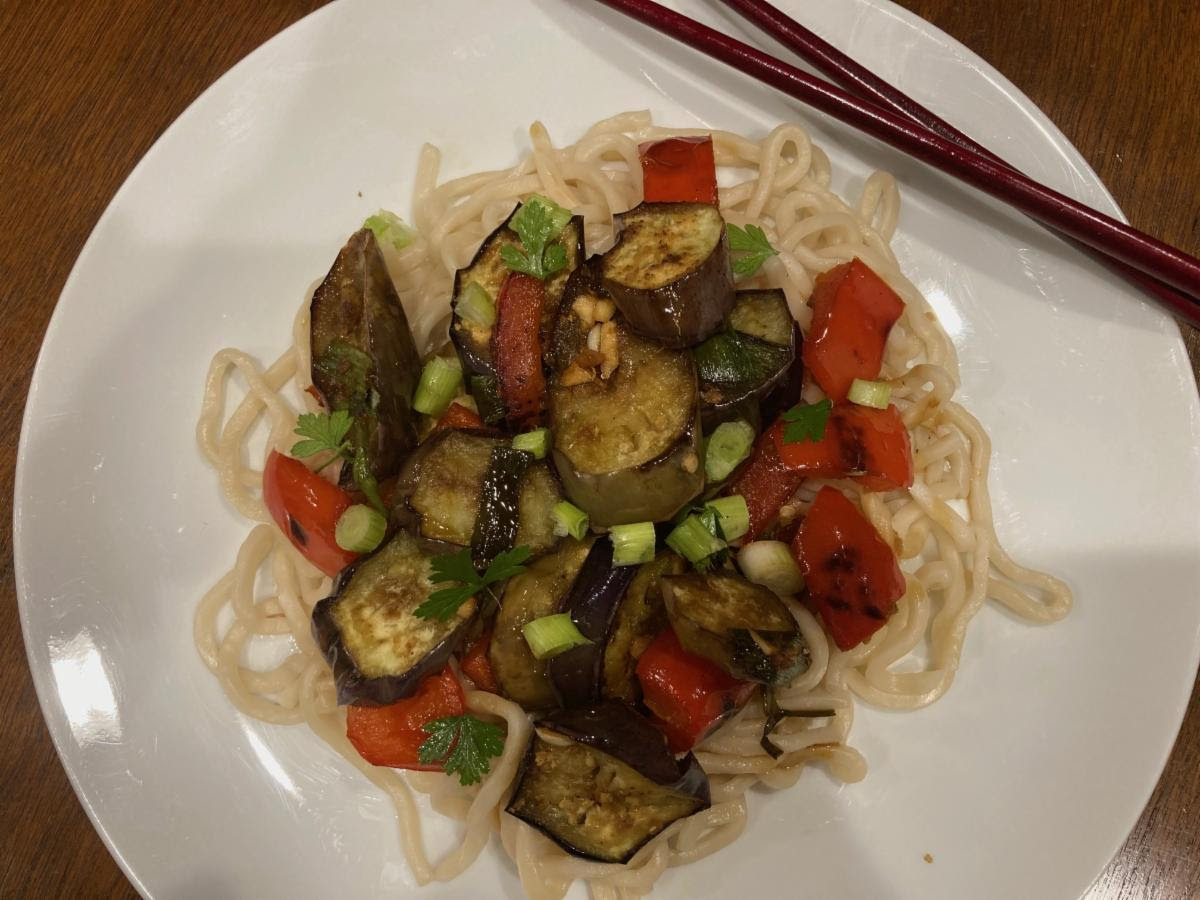This easy side dish is great on its own or served over udon noodles. Long slender Japanese eggplant (also called Chinese) is less bitter and has a slightly sweeter taste than their Italian counterpart. It has thin skin and spongy flesh which quickly absorbs flavors. No need to peel or salt before cooking.
Makes 4 servings
Ingredients:
- 1½ to 2 lbs. Japanese eggplant (about 3-4 medium)
- 2 Tbsp vegetable oil
- 1 red bell pepper, veins and seeds removed, cut into 1″ pieces,
- 3 stalks of scallions, cut into 1″ pieces
- Chopped parsley and sliced scallions for garnish
- Udon noodles (optional)
For the sauce:
- ¼ cup soy sauce
- 1 tablespoon rice vinegar
- 1 Tbsp toasted sesame oil
- 2 Tbsp water
- 2 Tbsp dark brown sugar
- 1 teaspoon grated ginger
- 4 cloves garlic, minced
Directions:
- In a small bowl, whisk together all the ingredients for the sauce. Set aside.
- Slice the eggplant on the diagonal, 1/2 to 3/4-inch thick. Heat the oil in a 12-inch skillet or wok over medium-high heat. Add eggplant in a single layer, without overlapping slices. Cook until the eggplant is golden and a bit charred in places, about 4 minutes. Turn and cook on the other side until tender. Repeat with remaining eggplant, adding more oil to the pan as needed. Remove eggplant and set aside.
- In the same skillet, add red bell peppers and scallions. Cook until crisp tender. Add the eggplant back in.
- Pour the sauce over the vegetables; it will start to thicken immediately. Reduce heat to medium low and simmer for 2 minutes. Remove from heat. Top with parsley and scallions and serve.
- If serving over udon noodles, prepare noodles according to package directions.
Tip:
- Top with stir-fried tofu, chicken, shrimp or beef for added protein.
- How to select Japanese eggplant: A good Japanese eggplant feels heavy for its size, slightly firm with smooth skin, shiny, and deep purple. Avoid eggplants with dull, wrinkled, streaked or yellow skin, as these may be overripe. Also avoid eggplants with brown blemishes or soft spots.
